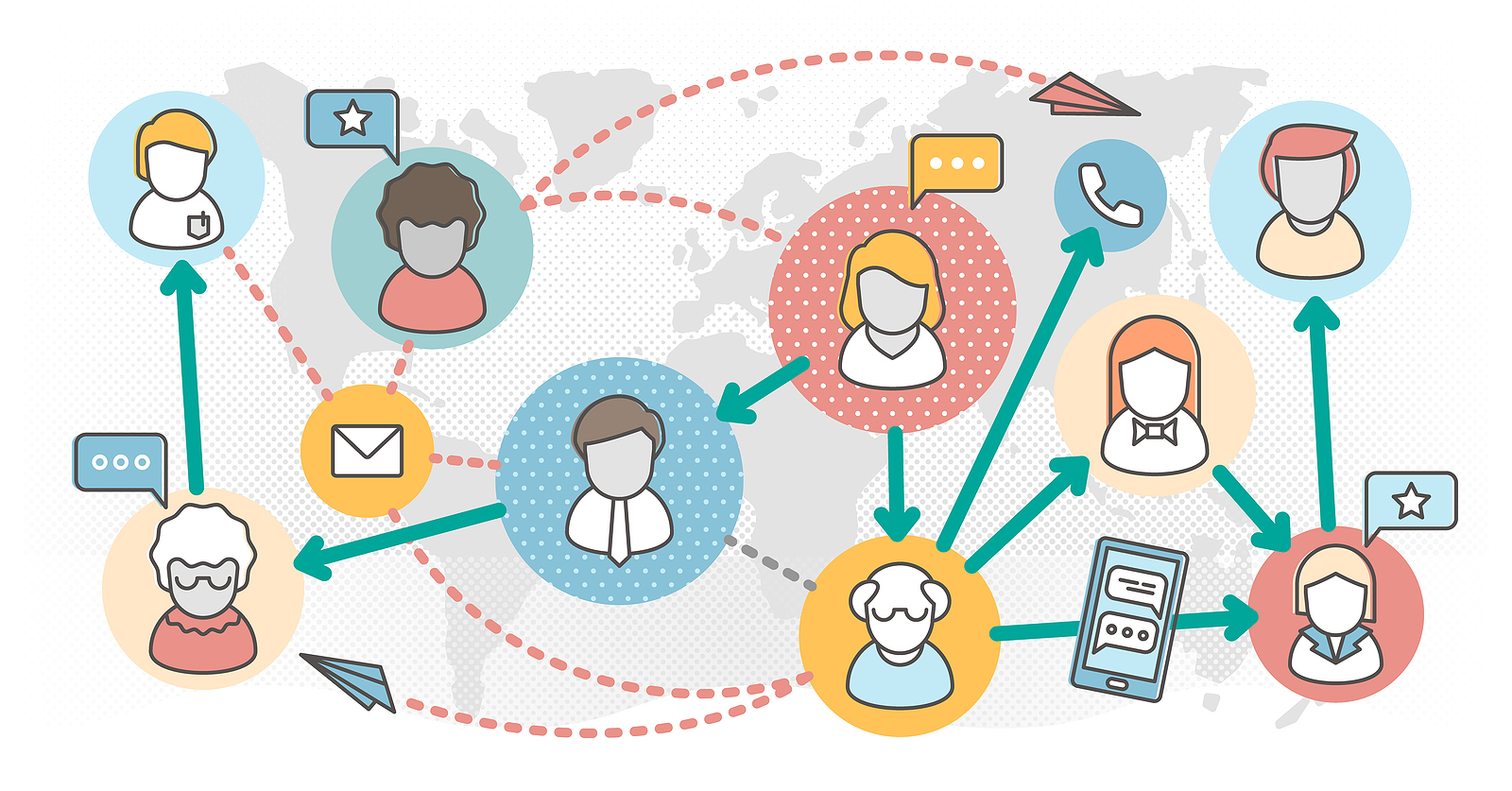In the ever-evolving world of digital marketing, efficiency is everything. Brands and creators are constantly looking for smarter ways to get more mileage out of their content. Two commonly used strategies for this are repurposing and reposting content, but what do they both mean? In this article, we’ll be going through their differences, their advantages and how you can execute both effectively. Let’s take a closer look:
Repurposing content: what does it mean, what are the benefits & how can you do it yourself?
Repurposing content has long been thought of as a great way to boost SEO quickly and efficiently. But while you might have heard of the term ‘repurposing content’, you may not be aware of what it means, what the point of it is and how you can do it effectively. With this in mind, here’s everything you need to know about repurposing content so that you can do it yourself:
What does it mean to repurpose content?
In short, repurposing content refers to taking existing content that’s already been created and is in the public domain and adapting it into different formats for various platforms. It can also mean tailoring existing content for new audiences or for updating old facts and statistics that are now outdated or irrelevant to times today.
What are the benefits of repurposing content?
Repurposing content offers a range of benefits for businesses, marketers and content creators alike. With this in mind, here are some of the key advantages of repurposing the content you’ve already got:
- Maximises return on investment (ROI) – repurposing helps you to get more value from it by reaching a new audience or reinforcing messages across multiple channels
- Expands audience reach – people will consume and engage with content differently, meaning that turning blog posts into video, infographics, or podcasts will allow you to reach users who prefer other formats or platforms
- Saves time and resources – creating content from scratch can take time, so repurposing allows you to create something different without using the time associated with standard content creation
- Reinforces key messages – reception across different formats reinforces your core message and strengthens brand recall
- Improves SEO – repurposing content can result in increased pages being indexed, more backlinks and effective keyword targeting, therefore boosting your website’s visibility in the search engines
- Fills gaps in the content calendar – when short on ideas, repurposed content can help to fill in the gaps, especially if you’ve reached writer’s block or are lacking inspiration for new ideas
- Highlights evergreen value – it keeps content alive and relevant, therefore allowing it to continue to generate traffic, leads and engagement, even after the original publishing date
- Enhances multi-channel strategy – it can be adapted for social media, email campaigns, webinars, newsletters, lead magnets and more, therefore supporting a well-rounded digital presence
Tips for repurposing content
How can you repurpose the content that already exists on your website effectively? Don’t worry, because we’re here to help you answer that. Here are some of our tips and advice for repurposing original content so that you can get the most out of it:
- Identify evergreen content – start with the content that remains relevant over time, such as guides, ‘how to’s’ and listicles
- Break down long-form content – turn detailed, long-form content pieces into something smaller and easily digestible by your readers, such as social media posts, short videos, reels, email tips and newsletters
- Convert blogs into videos or podcasts – use key points from the blog post as a way to create short videos, a podcast discussion or a narrated presentation
- Turn content into a series – split a single topic into a multi-part social media or email series. This keeps your audience engaged and helps build anticipation
- Use data to create visuals – this is something to do if your blog posts contain facts and statistics. Make infographics or charts, create carousel posts for platforms like LinkedIn and Instagram and add visuals to boost SEO and shareability overall
- Refresh and update old blog posts – take older blog posts and add new data or trends, improve formatting and SEO and republish the content with new titles and dates
- Optimise for each platform – tailor repurposed content to suit the style, format and audience of the platform you’re using. What works on Instagram won’t work on LinkedIn, for example
- Use a content repurposing calendar – plan your repurposing strategy using a content calendar or tracker. This is what will ensure consistency and avoid repetitive posts

Reposting content: what does it mean, what are the benefits & how can you do it yourself?
Reposting content is likely another term you’ve heard if you work within the marketing industry. While it sounds fairly straightforward, there’s a lot more involved with the act of reposting content than you might have otherwise thought. We’re going to be taking you through what it really means, how it benefits you and how you can do it properly for optimum results:
What does it mean to repost content?
Reposting content means sharing the same piece of content again, usually on the same platform or across multiple platforms. It will either be reposted as-is or with minimal changes.
What are the benefits of reposting content?
There are many benefits of reposting content, when done correctly, that businesses and marketers can experience. It offers strong advantages for your brand, content strategy and audience engagement overall. With this in mind, here are the benefits of reposting content that you might not have thought about:
- Increases visibility – not everyone sees your content the first time, so reposting gives it a second, or even third, chance to reach different time zones, audiences that missed it the first time and new followers
- Saves time and effort – creating fresh content constantly is very time-consuming. Reposting lets you stay active without starting from scratch every single time
- Boosts engagement – if a post performed well, even just once, then chances are that it’ll perform well again. Reposting high-performing content can generate more shares, comments and likes, as well as extend its impact and lifecycle
- Reinforces key messages – repetition is a classic marketing tactic. Reposting helps remind your audience of important products, services, calls to action or important ideas
- Provides testing opportunities – you’ll be able to repost content with different headlines, new visuals and altered hashtags, helping you test what works best for your audience
- Reaches a broader audience – some users prefer different platforms or content formats, so posting across different channels helps you to reach both your existing audience and a broader one
- Useful for slow inspiration days or when writer’s block hits – if you’re running low on new ideas, then reposting content keeps your channels updated without the need to create something new
- Highlights evergreen content – evergreen content can be reposted regularly to deliver value continuously, as it will stay relevant over time
Tips for reposting content
Reposting content might sound straightforward, but there’s actually a lot more to it than you might have otherwise thought, including getting the timings right and choosing the content to repost for the best possible results. Here are some tips and advice for effectively reposting content:
- Choose high-performing content – start with posts that got strong engagement initially. If it worked once, it’ll work again
- Refresh the caption or headline – Don’t repost your content word-for-word. Instead, make sure you’re changing the angle, the message, the CTA, the hook or the headline to give it a new spin and to keep things interesting
- Repost content at different times throughout the day – share content at new and different times throughout the day to reach a variety of segments of your audience, including those in other time zones
- Tailor the posting to each platform – rework the format or length to suit where you’re reposting. Turn the blog post into an X thread, resize an Instagram graphic for LinkedIn or convert a video clip into a reel or TikTok video
- Space out your reposts evenly – avoid reposting too soon. Give it several weeks, or even months, before reposting, especially if your audience is active and likely to remember recent posts
- Repackage the content – transform the original post into a new format to keep the core content the same. This could involve turning a blog post into an infographic or a podcast into a short-form video, for instance
- Use analytics to guide you – use analytics to track which reposts perform well, the optimal times to repost and the audience response for each repost, including comments, reach and shares. Adjust the reposting strategy in line with this

Repurposing vs. reposting content: what are the differences?
Essentially, the main difference is that reposting content means to take existing content and reshare it to existing and potentially new audiences. Repurposing content refers to taking original content and adapting it into another format, ready for sharing with new audiences, as well as existing ones. The goal of repurposing includes reaching new audiences and suiting different platforms and formats. Reposting content, on the other hand, gives content a second chance to reach audiences who have missed it the first time. Both methods help to save time, however.
Which one should you choose?
Ideally, you should be using both methods in conjunction with one another. You should repost content to diversify your content, serve multiple platforms and reach broader audiences. You can repost to maintain visibility, save time and make the most of your high-performing content.
Repost content if you want to:
- Boost visibility with minimal effort
- Renegage followers during slower content periods
- Test different times, captions or audiences
- Reshare content that’s still relevant (especially evergreen)
Repurpose content if you want to:
- Reach new audience segments
- Make content work across multiple channels
- Extend the life of evergreen content
- Increase SEO performance with variations
- Create varied content from one core idea
At Kumo, we deliver tailored digital marketing solutions to businesses across the UK. Based in the heart of Nottingham, our experienced team specialises in SEO, PPC, content creation and website design – all designed to boost your brand and help you stand out. Interested in finding out more? Contact our approachable and professional team – we’re ready to support your success.
Author Biography
Lorna
As an experienced Copywriter, Lorna enjoys creating varied content for an abundance of different industries and sectors. From detailed, informative articles to creative infographics, she's always looking to inject originality into the work she produces. When she isn't working, Lorna runs her own lifestyle blog, plays the guitar and loves to take part in charity runs.